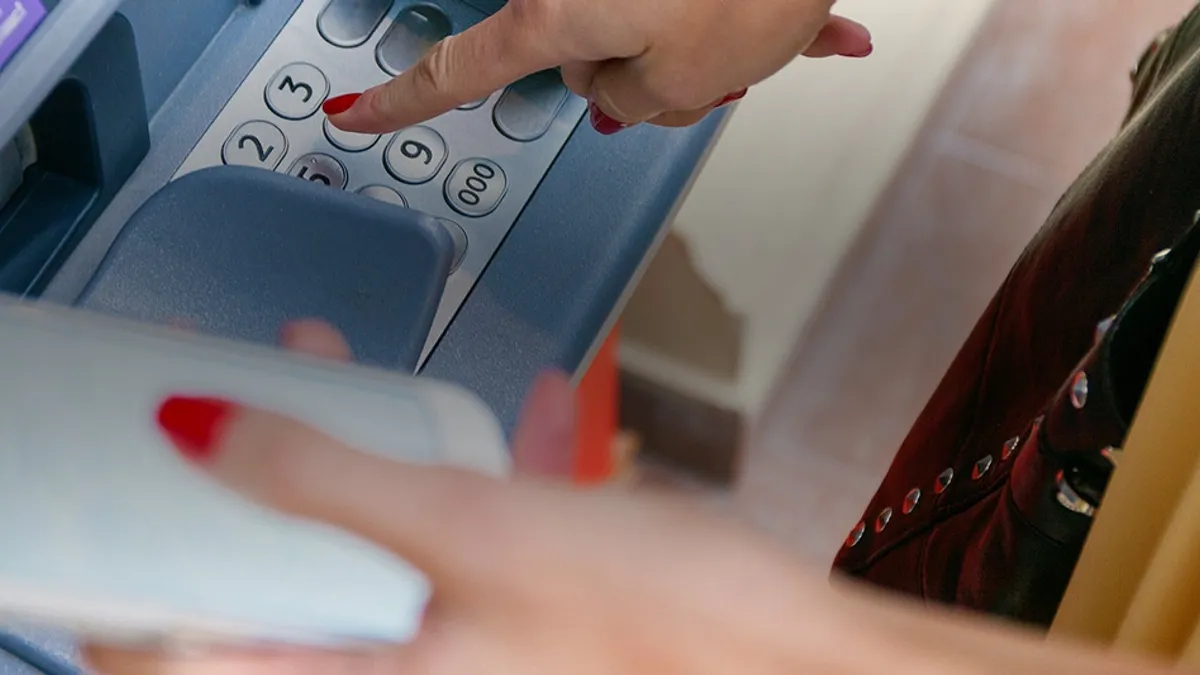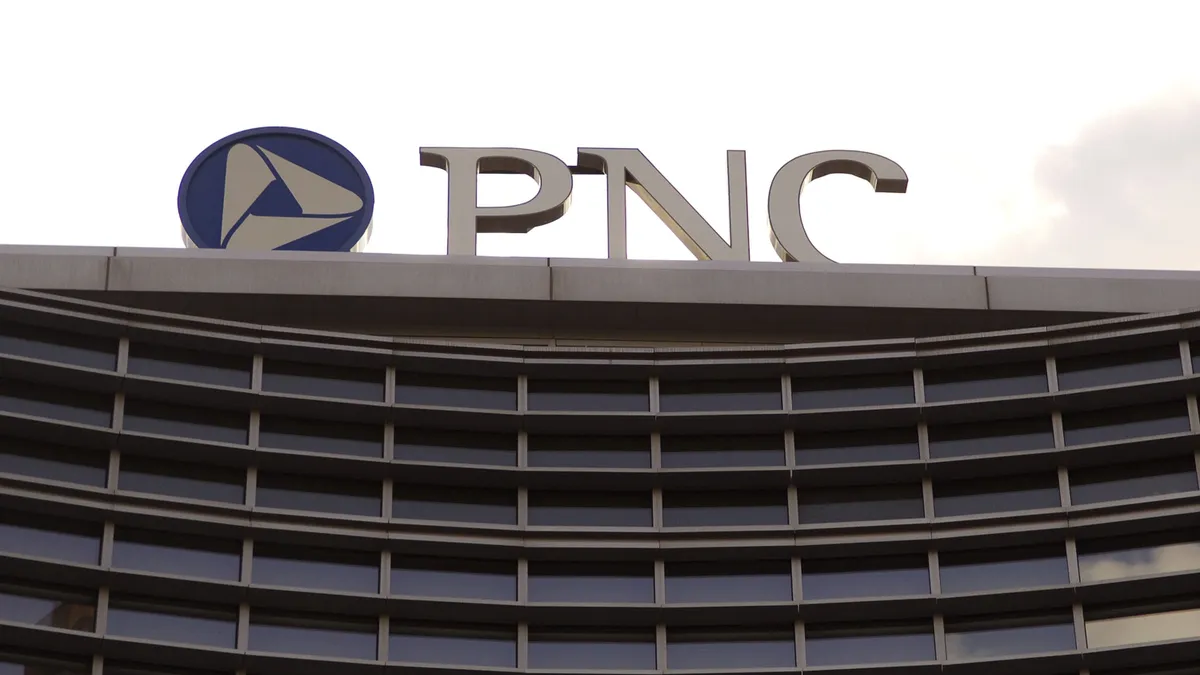AUSTIN, Texas — Bill Budde helps financial institutions transform their branches. A veteran in the space, the vice president of product marketing for ATM manufacturer Hyosung previously worked for JPMorgan Chase, where he led the bank's conversion to image-enabled ATMs.
Budde, who works for Seoul, South Korea-based Hyosung's North American division, said the company counts seven of the U.S.'s 13 largest banks among its customers.
"We also work with banks that have one or two branches because our technology is pretty equal-opportunity," he told Banking Dive on Tuesday at the Future Branches conference.
Banks are choosing to invest in in-branch technology to save on costs, among other reasons, Budde said.
"It's more expensive to have to pay people to count money all day long than it is to automate that process," he said. "It’s not only more expensive, but it's also more error-prone. You get more efficient and more effective by automating basic things that need to be done to operate a bank branch."
This interview has been edited for clarity and brevity.
BANKING DIVE: What are banks choosing to do with the extra space they're finding after they undergo certain branch transformations?
BILL BUDDE: Opening up their space in a couple of different ways. Some credit unions have adjusted some of their branch models, especially to attract a younger demographic. One credit union had a location close to a college campus and had a high percentage of younger customers. They had an open, tech-centric space and their customers would come and pull out their iPad and do a little homework before leaving to go to their next class.
For the longest time, banks would build these 3,000- to 4,000-square-foot locations because they assumed that's the way things were always done. So they built these big spaces, and they included a conference room, because everybody thinks you have to have a conference room in a bank branch. More and more banks are realizing that we don't use the conference room more than once or twice a week. So a lot of banks are opening up their conference room for public use. They're opening it up as an added perk for that small business who is a customer of that bank. ... So that's been something that has been very well received.
How are employees responding to these branch changes?
BUDDE: That's probably the most important part of the entire effort that a bank goes through when they are transforming their business model. They need to ensure that their employees are well trained for the new tasks that they have to do, but also make sure that the processes that support those employees are newly updated and accurately reflect the new business model for the bank, as well, because the job does fundamentally change a bit.
When you're taking away all those rote counting-type tasks from branch employees, it puts them in a position to focus on different things, like customer satisfaction. … When you take away the stress of always having to be balancing the dollars in your drawer and instead replace it with being measured on how happy the customers are, that's a huge burden off their shoulders. It becomes a much less stressful job. And then that puts them in a position where they're going to make those customers happier because they're happier doing their job.
What kind of mistakes are financial institutions making when it comes to branch transformation?
BUDDE: One of the things that customers react very negatively to is forcing them to do something. Customers have created a basic expectation among themselves that they're going to have choice pretty much everywhere they go to do business. And creating a business model that doesn't meet that expectation is one that really creates a set of unhappy customers. So that's probably been one of the bigger ones that I've seen occur. And it's an easy one to correct, because when you're changing to a new model, you still have all the old model stuff. Don't throw it out as much as de-emphasize it, or keep it as a choice.
You can strategically guide your customers to the preferred model that you would like them to go in. But as long as you have the release valves for customers who might want a different experience, then it actually makes it easier to encourage them to go do the experience you want.
What advice would you give to a bank that is considering a branch revamp?
BUDDE: Listen to your customers. What are your customers telling you they want?
I would also say, a great way to figure out where to go is to look at other examples that have already started down the path, because every bank has different priorities. Every bank has a different North Star. There's no cookie-cutter answer.
My advice would be to go look at some other options of banks that have already started down this path. Look at what resonates with you, and what doesn't resonate with you as far as what your business priorities and what your North Star is. Learn about the actual implementation of those things so that you can figure out what best fits within your own business's personality.
What about the growth of digital-only banks? What does that say about the future of branch banking?
BUDDE: As everything becomes more digital, I think that there will be a constituency for those types of banks. We're still a long way from being in a cashless society. So even digital banks will have to have physical touch points for their customers. That doesn't have to be a branch. That can just be the ability to reimburse ATM fees, using anybody else's ATM. There has to be some way to actually physically take and receive cash from customers if you're a fully digital bank. And the best digital banks are the ones that are going to solve that problem and meet the needs of that constituency. But banking is still a very in-person business for a lot of customers. Customers still choose their bank based on the proximity of a bank branch, even though when you ask those same customers how often they go to the branch, they'll say once or twice a year, maybe not even that much. But they choose it for that convenience.
I don't think [digital-only banks] will be universal for a long time. But it's certainly something that needs to be taken into account. I would also say that the best physical banks are going to be looking at those banks and learning from them.





















